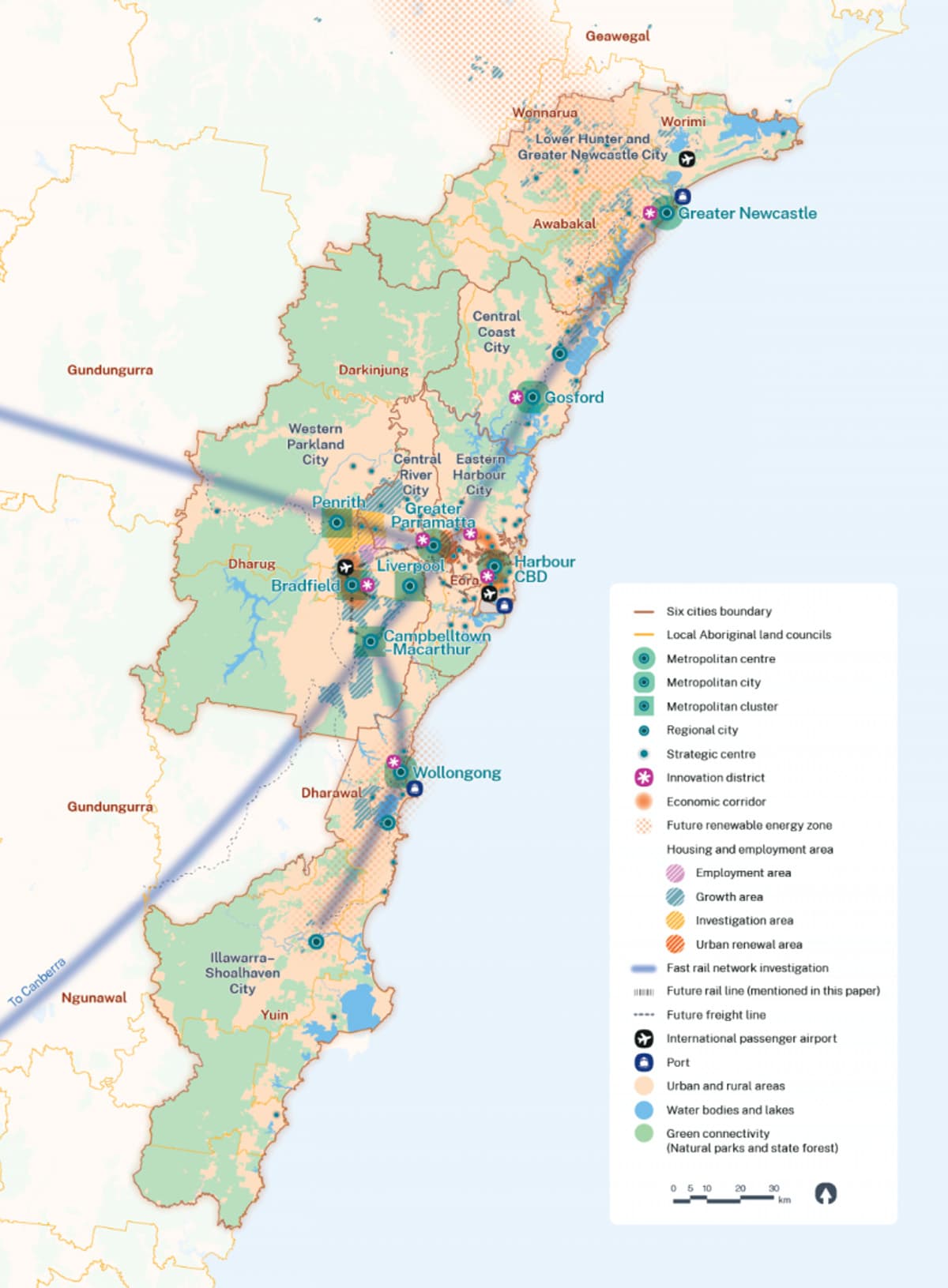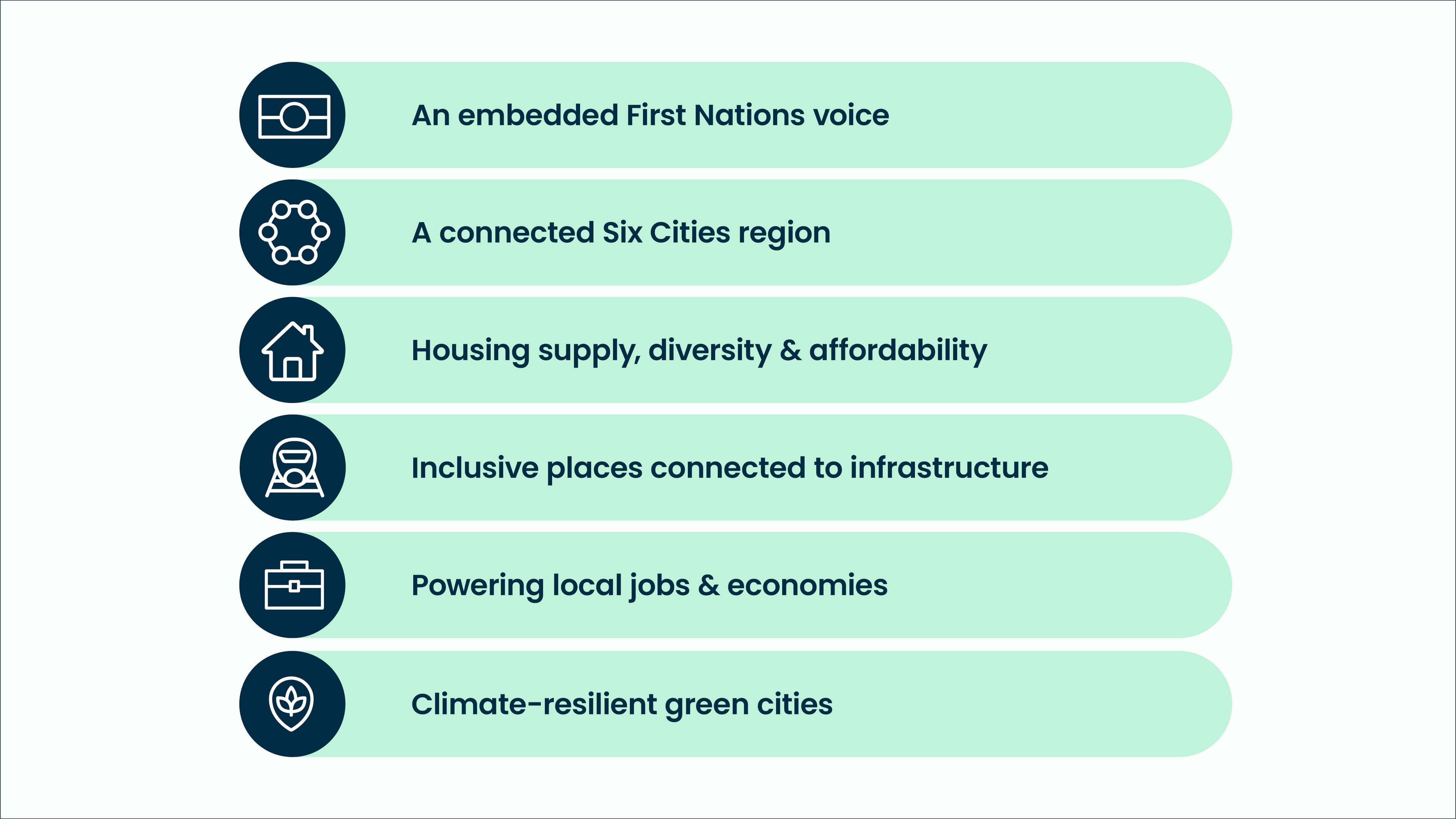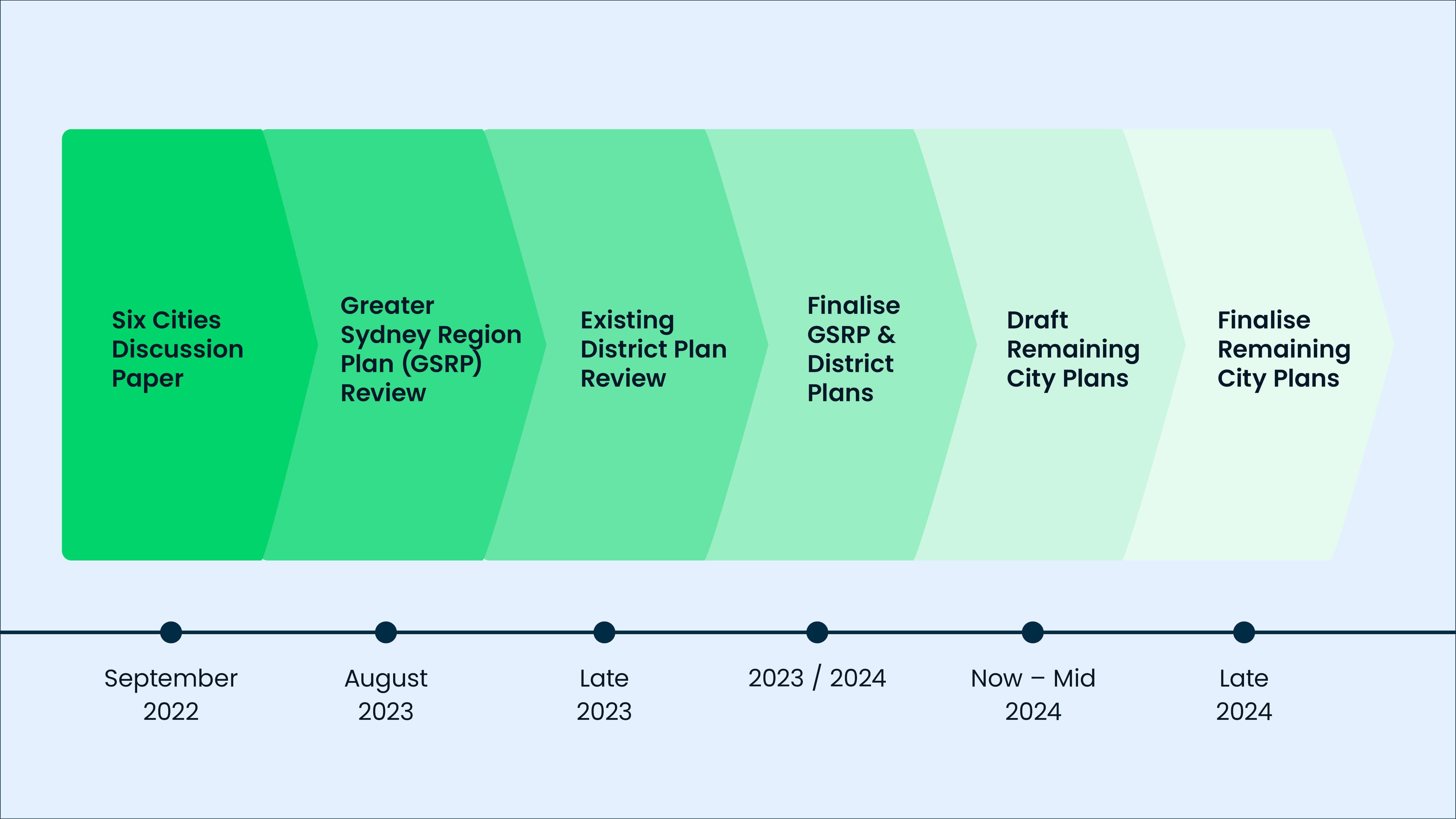From three to six cities: the future of Greater Sydney

The evolution of Greater Sydney from a Metropolis of Three Cities to that of a Six Cities Region has been unveiled with the release of the Greater Cities Commission’s (GCC) Six Cities Region Discussion Paper.
HEADING
The Discussion Paper presents the vision, ideas and suggested actions and directions for the future growth, development, and evolution of the City Region.
The Six Cities Region encompassing Newcastle, the Central Coast, Wollongong and Greater Sydney comprising the Western Parkland City, Central River City and Eastern Harbour City, will be connected through enhanced technology and fast rail with housing targets including affordable housing targets to be set for each local government area. The Discussion Paper builds on work already undertaken by the GCC (formerly the Greater Sydney Commission) and will develop fresh City Plans for each of the cities in the region.

The discussion paper aims to stimulate conversation about the best way to plan the Six Cities Region. It is the beginning of dialogue between stakeholders and the GCC to plan for the growth of the region.
The discussion paper puts forward future ideas that could be embedded in the draft Greater Sydney Region Plan and the accompanying City Plans. Some of the ideas in the paper reflect current challenges such as housing supply and affordability issues, post pandemic cities, resilience, elements of recent proposed policy measures and new design guides. Some specific targets and actions are presented while in other cases, the GCC is pointing to a challenge and provoking discussion about a potential solution.
The ideas are framed around region shapers which are proposed to realise the vision for the region.
These are a set of priorities which will shape the 2023 Region Plan and accompanying City Plans and consist of:

Key actions and directions proposed in the discussion paper include:
- Setting five, 10 and 20-year dwelling targets for each council including for resilient, adaptable, affordable and diverse housing
- A focus on fast rail to connect the region
- Establishing a First Nations Advisory Panel to advise on regional strategic planning
Targets for housing to be delivered within 800m of transport hubs including:
- A minimum target of 25 per cent for the proportion of the total LGA housing target to be delivered through a mix of higher density housing types
- A target for the proportion of affordable housing in these locations.
- Identifying precincts and centres with the most potential to support delivery of housing targets
- Identifying priority housing areas and additional approaches to incentivise achievement of housing targets
- Identifying areas exposed to climate risks and setting climate resilient targets
- 10% affordable housing targets for rezonings with 30% on government owned land
- Developing global innovation districts and including an industrial lands policy across the Six Cities Region
- Setting job targets for each of the six cities and across four categories of jobs (knowledge-intensive, health and education, population-serving and industrial)
What’s our view on the paper?
The release of the discussion paper provides the guideposts for the development of future strategic plans across the Cities Region. It proposes important changes to planning over the coming years together with crucial targets and aspirations. Some of our key observations on the discussion paper include:
- The concept of strategic planning at wider scale, connecting satellite cities to greater metropolitan Sydney is a welcome step to realising the Six Cities vision
- Identifying housing targets for individual councils over five, 10 and 20 years is congratulated. However, more needs to be done to ensure these targets are achieved
- Focusing future housing around key transport hubs through a mix of high-density development is a sensible approach to provide much needed future housing supply. The targets associated with this should be carefully considered
- A sensible approach to the management of industrial and employment lands resulting from the review of the current policy is overdue
- Monitoring the implementation of the plans is fundamental to their success. The Commission should build on and improve current methods of monitoring and implementation
- Ultimately, success hinges on coordination and commitment to transport investment to achieve truly connected cities within the region
- Most importantly, now is the start of the Commission’s engagement with industry and now is the time to be opening a dialogue with them.
Next steps in the process
The Commission is proposing to review the existing Region and District Plans together with developing new City Plans in a staged approach outlined below:

Following the finalisation of the plans, each council within the city region will be required to give effect to these through updates to their Local Strategic Planning Statements and Local Environmental Plans. The Commission will establish a framework for monitoring and evaluation alongside the development of the Region and City Plans that can assist in measuring the performance of the six cities.
The ideas presented in the paper will evolve through engagement and the GCC is welcoming input and feedback on the paper. The discussion paper is currently open for comment with engagement on the development of the plans taking place until mid-2023. We will be providing updates as more details on the development of the Region and City Plans emerge.
If you would like to know more, please reach out to our team below.












